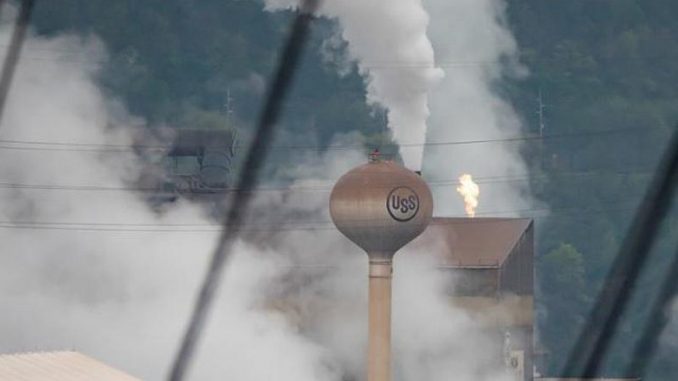
PARIS, France, May 15, 2021 (ENS) – Methane emissions caused by human activities can be reduced by up to 45 percent this decade, finds the world’s first Global Methane Assessment just issued by the Climate and Clean Air Coalition, a voluntary partnership led by governments, and the United Nations Environment Programme, UNEP.
Such reductions would avoid nearly 0.3°Celsius of global warming by 2045 and would be consistent with keeping the Paris Agreement’s goal to limit global temperature rise to 1.5 degrees Celsius within reach. The assessment, for the first time, integrates the climate and air pollution costs and benefits from methane mitigation.
But global fossil methane emissions from natural gas, oil, and coal production and use could be between 20 and 60 percent higher than current estimates, the report warns. This demonstrates both the importance of mitigation of methane emissions from the oil and gas industry and the urgent need for comprehensive information on emission sources.
Drew Shindell, who chaired the assessment for the Climate and Clean Air Coalition, and serves as a professor of climate science at Duke University, said urgent steps must be taken to reduce methane emissions during this decade.
“To achieve global climate goals, we must reduce methane emissions while also urgently reducing carbon dioxide emissions,” Dr. Shindell said. “The good news is that most of the required actions bring not only climate benefits but also health and financial benefits, and all the technology needed is already available.”

The assessment was compiled by an international team of scientists using state-of-the-art composition and climate models and policy analyses from four leading research centres to create the most comprehensive benefits and costs analysis of methane mitigation options assembled to date.
The assessment analyzes national level impacts for every country and regional mitigation potential to help policy makers assess global and local costs, which sectors to target, and the effects of methane reductions.
Roughly 40 percent of methane is emitted into the atmosphere by natural sources such as wetlands and termites, and about 60 percent comes from human activities and sources such as livestock, rice agriculture, fossil fuel exploitation, landfills and biomass burning.
Because methane is a powerful climate forcer and dangerous air pollutant, as well as a key ingredient in the formation of ground-level ozone, or smog, a 45 percent reduction of its emissions would prevent 260,000 premature deaths, 775,000 asthma-related hospital visits, 73 billion hours of lost labor from extreme heat, and 25 million tonnes of crop losses every year.
“Cutting methane is the strongest lever we have to slow climate change over the next 25 years and complements necessary efforts to reduce carbon dioxide. The benefits to society, economies, and the environment are numerous and far outweigh the cost. We need international cooperation to urgently reduce methane emissions as much as possible this decade” said UNEP Ex3ecutive Director Inger Andersen.
Methane is a powerful greenhouse gas which remains in the atmosphere for about a decade – a much shorter time than carbon dioxide, the most prevalent and best known greenhouse gas.
Observations of methane in the global atmosphere are coordinated by the World Meteorological Organization’s Global Atmosphere Watch Programme. Based on these observations, WMO documented that globally-averaged methane concentrations were 260 percent of pre-industrial levels in 2019 at 1,877 parts per billion, according to the WMO Greenhouse Gas Bulletin.
Global methane levels were increasing at 12 parts per billion per year during the late 1980s, but then the growth was stagnant during the period 1999 to 2006 .
Since 2007, atmospheric methane has been increasing again with increased emissions from wetlands in the tropics and from human sources at the mid-latitudes of the northern hemisphere as the likely causes of this increase.
Methane contributes about 16 percent of the radiative forcing by long-lived greenhouse gases. Radiative forcing is the difference between the sunlight absorbed by the Earth and the energy radiated back to space. It is the scientific basis for the greenhouse effect on planets, and plays a role in computational models of Earth’s energy balance and climate.
The new Climate and Clean Air Coalition report notes that most human-caused methane emissions come from three sectors: fossil fuels, waste, and agriculture.
In the fossil fuel sector, oil and gas extraction, processing, and distribution account for 23 percent, and coal mining accounts for 12 percent of emissions.
In the waste sector, landfills and wastewater make up about 20 percent of emissions.
In the agricultural sector, livestock emissions from manure and enteric fermentation represent roughly 32 percent, and rice cultivation eight percent of emissions.
The assessment identifies measures that target methane emission. By implementing these readily available solutions methane emissions can be reduced by 30 percent by 2030.
Most of the solutions are in the fossil fuel sector where it is easy to locate and fix methane leaks and reduce venting. There are also targeted measures for the waste and agriculture sectors.
WMO’s Integrated Global Greenhouse Gas Information System, IG3IS, provides information that enables stakeholders to identify and manage sources of methane emissions.
Of particular interest to IG3IS are methane emissions from the oil and gas supply chain because “the industry is a system that in comparison with other anthropogenic sources (e.g. agriculture) is more physically concentrated and the number of actors is also relatively limited, which facilitates the implementation of mitigation strategies,” the WMO says.
Overall, tackling methane emissions is a great target for IG3IS technologies, as it has the potential to create a large global impact.
Featured Image: Methane flaring from the U.S. Steel Edgar Thomson steel mill in Pittsburgh, Pennsylvania April 17, 2021 (Photo by Mark Dixon)
© 2021, Environment News Service. All rights reserved. Content may be quoted only with proper attribution and a direct link to the original article. Full reproduction is prohibited.



